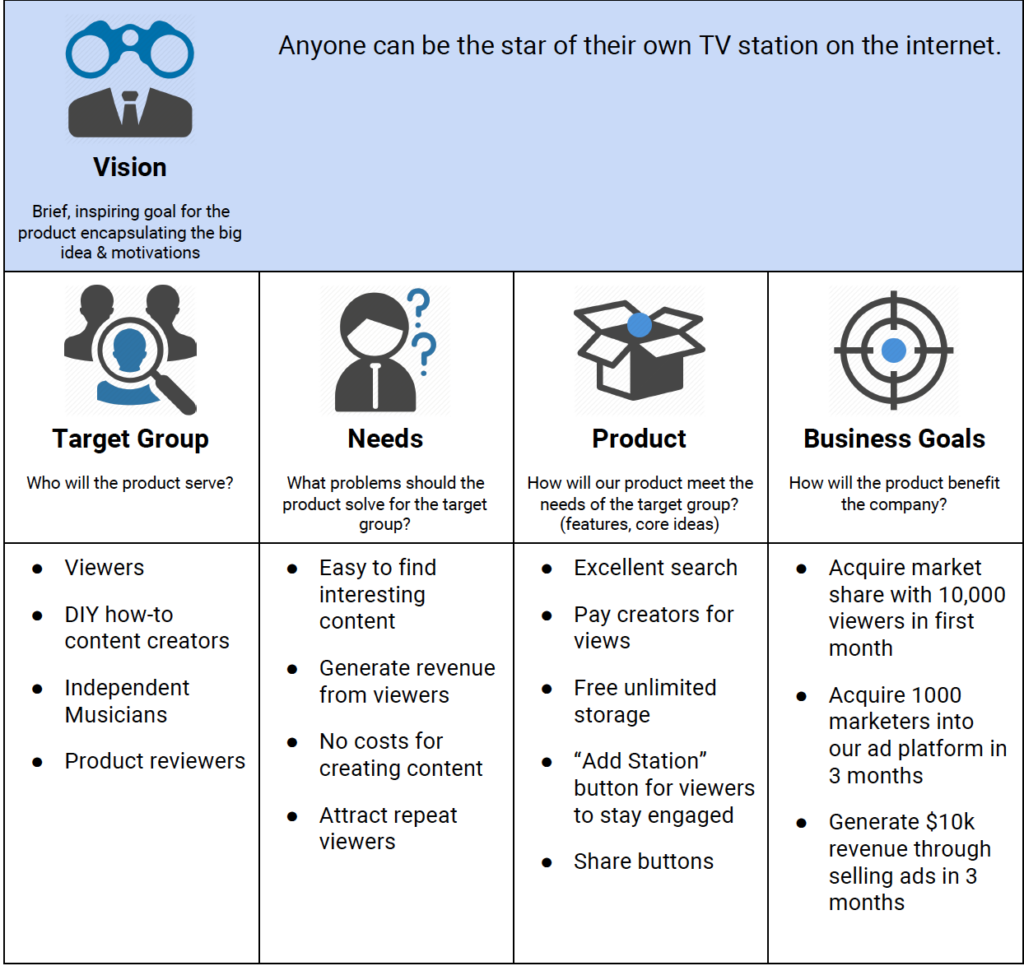A lot of businesses have a vision statement – a memorable sentence that expresses the core aim of the company. However, not many lay it all out on a product vision board. When City Innovation Labs facilitates workshops with our clients we like to ask if the business has a vision statement for itself or the product we are discussing. It helps us understand the destination so we can chart a path to success.
Creating a vision statement is a bit like choosing a heading when navigating with a compass. It sets the direction for the product and gives you a point of reference to check regularly.
This way, you can make adjustments to your course to reach your destination. Having a clear vision helps focus and prioritize the work that will be done.
A helpful tool for forming a vision for a new product is the Product Vision Board by Roman Pichler.
What is a Product Vision Board?
A Product Vision Board can be used to organize your thoughts and intentions around a new product – ideally, before you begin planning or working on the product. At the very top is the overarching Vision statement. Below are four sections to elaborate on details like the Target Group for the product, the Needs the product will serve, the Product attributes which bring value, and the Business Goals the product aims to achieve.
How to Use a Product Vision Board
Approach each exercise thoughtfully and include your stakeholders and team members for a variety of perspectives. Don’t be afraid to spend time at this stage. A well-considered vision will make future decisions easier so that teams can accelerate more quickly. You’ll probably begin with an initial vision statement and revise it as you dive more deeply into the other sections. It’s okay to start with any of the board’s exercises and re-visit them as your team gets new ideas or wishes to refine ideas from previous exercises.
Let’s demonstrate the idea by walking through an example based upon a video sharing website we’ll call MeStream.

Vision statement
Our example seeks to be inspiring by laying out the “big picture” idea with just enough detail to get a team thinking. We avoided adding lots of specifics in this example vision statement, choosing instead to keep it brief. This helps our statement remain memorable. That means a team is more likely to think back and consider it naturally and frequently as they plan and work on the project.
An earlier version of this statement might have said “Video professionals”. However, after considering the target group, expanding it to say “Anyone” may make more sense. Consider revising your statement after going through each of the exercises found below.
Consider the Target Group
This exercise should define the people who will use the product or service. It is often sufficient to list the primary types of people instead of creating an exhaustive list. You might even use detailed persona mapping exercises to create named personas for this section. A persona map details people archetypes that represent shared interests, skill sets, pain points, etc. The point of this section of your Product Vision Board is to figure out who will be the market for your product. Our example includes groups of people who are likely to have different needs for our product.
List the Market Needs
As you think about the target group of people, empathize with their experience and make a shortlist of the problems your product will solve. These may be results from empathy mapping exercises or pain points you have observed through user testing. They may also include your hypothesis for something the target group doesn’t know they need. Keep in mind that this doesn’t need to be an extensive list, or even be very technical. These are high-level needs that your product must address to bring value to your target group. Our example lists needs which may be shared between more than one target group, and needs that may be specific to only one target group.
Capture Core Product Features
While the Needs section is focused on customers, the Product section should capture the core features or ideas the product will use to meet the needs of the target groups. Again, these are usually the “killer app” features and not an exhaustive technical list, which can be compiled later in a formal product backlog. Our example addresses each listed need with at least one product feature and avoids explaining “how” each feature works. This way the team can find creative solutions to these problems.
Define your Business Goals
Your product should benefit your company, right? The Business Goals section is used to align the product with your broader business goals. These goals can be as simple as “generate revenue” but should usually provide more clarity. The best business goals are unambiguous with clear metrics and a clear timeline which makes them easy to evaluate as a failure or a success. Our example provides a few examples which are measurable with a clear timeline.
It is tempting to fill in a Product Vision Board working top-down and lock it in place when you’re done. However, remaining flexible allows an organization to revise a product vision by adapting it to respond to new learnings in an agile way. Sticking too rigidly to one vision for a product might prevent you from a crucial pivot which could be the difference between failure and success.




